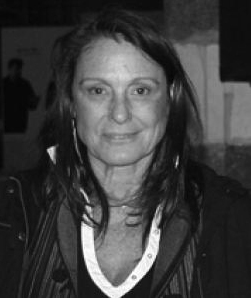Beth Galí
Barcelona, 1950
Throughout the 80s, a generation of young architects was driven by the idea of building a new Barcelona, with ambitious objectives: open the city to the sea, refurbish the historic district and turn it into a pedestrian area, create new public spaces, and design modern urban elements. The new paradigm in town-planning and architecture that resulted from the Barcelona 1992 Olympic Games was sold abroad as the "Barcelona model". Its most representative architects have since then renovated various urban spaces all around Europe, and are part of major architectural projects. As Galí states:...
Throughout the 80s, a generation of young architects was driven by the idea of building a new Barcelona, with ambitious objectives: open the city to the sea, refurbish the historic district and turn it into a pedestrian area, create new public spaces, and design modern urban elements. The new paradigm in town-planning and architecture that resulted from the Barcelona 1992 Olympic Games was sold abroad as the "Barcelona model". Its most representative architects have since then renovated various urban spaces all around Europe, and are part of major architectural projects. As Galí states: "When someone calls me to work abroad they are not looking specifically for me; my work, just like the one of my other colleagues, is nothing but the projection of a success."
Beth Galí studied Industrial Design at the Eina design school in Barcelona from 1966 to 1969. In 1982, she also graduated in architecture from the ETSAB (School of Architecture of Barcelona.) Galí was a student of Federico Correa at Eina and Alfonso Milá at the ETSAB and greatly admired them, she considers they have been the greatest support to her professional career.
From 1982 to 1988, she worked at Barcelona s city hall, where she planned public spaces, such as the Joan Miró park (with Màrius Quintana and Joan Miró) or the Túnel de la Rovira park, among others. Together with Màrius Quintana, she designed the Lamparaalta streetlamp (1983), that illuminates the Joan Miró park palm trees with its reflected light. It became a bestseller from its beginnings, and was awarded an ADI-FAD Delta de Plata in 1984.
Galí is acknowledged worldwide for the imaginative projects she has undertaken all around Europe, in which she has fostered pedestrian areas as the best way to live public spaces. Her most outstanding projects include the remodeling project of the Patrick and Gran Parade streets in Cork (Ireland, 1999), the historic district of s Hertogenbosch (Holland, 1993-1998), Roermond (Holland, 1995-1998), and Dublin (Ireland, 2002), or the urban spaces of Piet Smith in Rotterdam s pier (Hollan, 1996), for which she designed the Bici Línea bicycle rack. As for Spain, Galí has also undertaken numerous projects, such as the Zafra park in Huelva (1994), or the Joan Miró library (1990) and the swimming area at the Fòrum (2004), both in Barcelona.
1998 was a milestone for Galí: she was awarded the National Town-planning Award of Holland, an exhibition on her work was inaugurated in s Hertogenbosch, and the Het Kruithuis museum in s Hertogensbosch published "Beth Galí, architecture & design 1966-1998", edited in Spain by Península. Beth Galí has also been acknowledged on many occasions in Spain by the FAD and the ADI-FAD. She has been continuously collaborating with these entities. From 2006- 2010 she chaired FAD.
Galí collaborates intensely with academic entities, she teaches urban design at the ETSAB and at the School of Design at the Harvard University, and is a visiting lecturer in many other universities in Europe.
